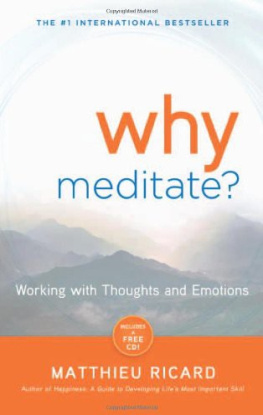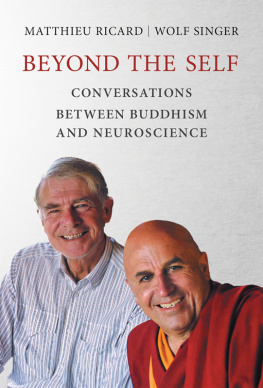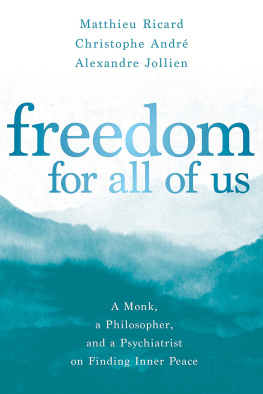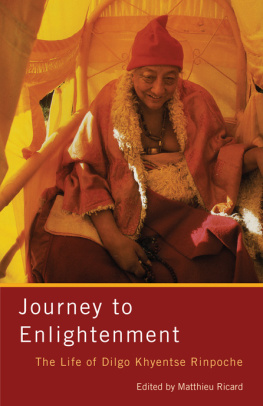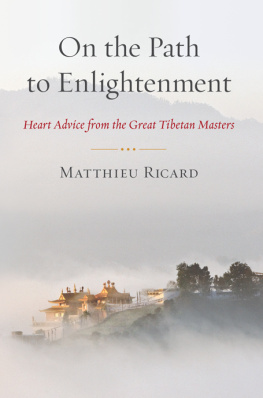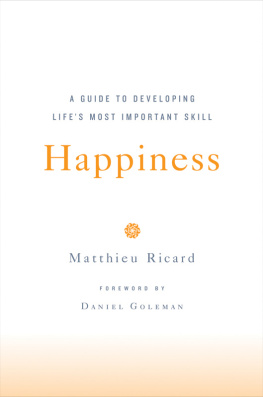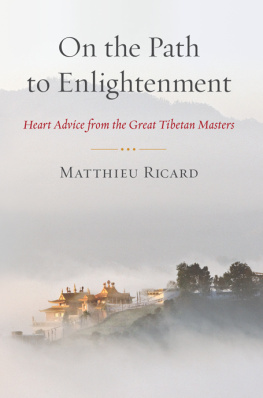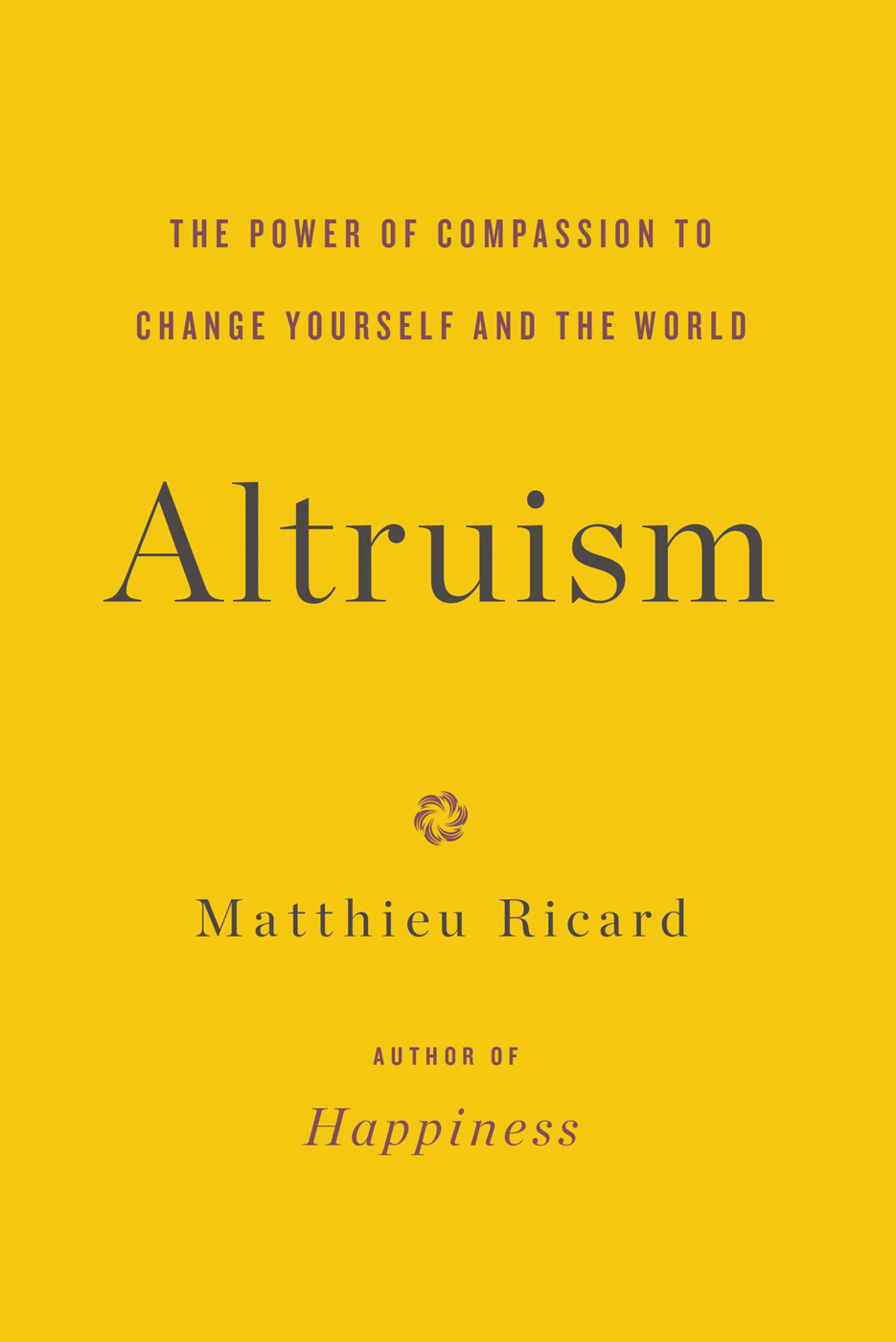Cover copyright 2015 by Hachette Book Group, Inc.
All rights reserved. In accordance with the U.S. Copyright Act of 1976, the scanning, uploading, and electronic sharing of any part of this book without the permission of the publisher constitute unlawful piracy and theft of the authors intellectual property. If you would like to use material from the book (other than for review purposes), prior written permission must be obtained by contacting the publisher at permissions@hbgusa.com. Thank you for your support of the authors rights.
Little, Brown and Company is a division of Hachette Book Group, Inc.
The Little, Brown name and logo are trademarks of Hachette Book Group, Inc.
The Hachette Speakers Bureau provides a wide range of authors for speaking events. To find out more, go to hachettespeakersbureau.com or call (866) 376-6591.
The publisher is not responsible for websites (or their content) that are not owned by the publisher.
Happiness
The Monk and the Philosopher (with Jean-Franois Revel)
The Quantum and the Lotus (with Trinh Xuan Thuan)
Buddhist Himalayas (with Olivier and Danielle Fllmi)
Journey to Enlightenment
Monk Dancers of Tibet
Tibet: A Compassionate Eye
To my spiritual masters, His Holiness the Dalai Lama, Kyapje Kangyur Rinpoche, and Kyapje Dilgo Khyentse Rinpoche, and all those who have opened my eyes to compassion.
To my mother, Yahne Le Toumelin, and to my sister ve, who taught me altruism by example. To Christophe and Pauline Andr, accomplices in altruism.
To my scientific mentors and friends thanks to whom this book has some credibility: Daniel Batson, Richard Davidson, Paul Ekman, Paul Gilbert, Jane Goodall, Richard Layard, Antoine Lutz, Tania Singer, Dennis Snower, Frans de Waal, and all those who enlightened me on numerous points.
To my friends, fellow workers, and benefactors in the Karuna-Shechen Association, who put compassion into action through their contribution to over a hundred humanitarian projects.
To Raphale Demandre, who never misses an opportunity to help those who are in need.
To those who have contributed so much to improving this book: Christian Bruyat, Marie Haeling, Carisse Busquet, and Franoise Delivet.
Finally, to all beings, who are altruisms reason for existence.
Nothing is more powerful than an idea whose time has come.
V ICTOR H UGO
Every man must decide whether he will walk in the light of creative altruism or in the darkness of destructive selfishness.
M ARTIN L UTHER K ING J R .
I have little inclination to talk about myself and would rather expound the views of the great thinkers who have inspired my existence. Telling you about a few stages of my personal journey, though, will help you understand how I came to write this book and to substantiate the ideas presented in it.
After growing up in France, I went to India for the first time in 1967, at the age of twenty, in order to meet the great masters of Tibetan Buddhism including Kangyur Rinpoche, who would become my main spiritual master. That same year, I began a dissertation on cellular genetics under the direction of Franois Jacob, at the Institut Pasteur. It was those years of scientific training that taught me to appreciate the importance of intellectual rigor and honesty.
In 1972, having finished my dissertation, I decided to move to Darjeeling to be near my teacher. During the many years that followed that encounter, whether in India, Bhutan, Nepal, or Tibet, I led a simple life. I received barely one letter per month; I had neither radio nor newspapers, and scarcely knew what was going on in the world. I studied with my spiritual master, Kangyur Rinpoche, and after his death in 1975, Dilgo Khyentse Rinpoche. I spent a number of years in contemplative retreat. I also devoted myself to the activities of the monasteries to which I had become linked: Orgyen Kunzang Chling in Darjeeling and Shechen Tennyi Dargyeling in Nepal, while working also toward the preservation of Tibets cultural and spiritual heritage. Thanks to the teachings I received from these masters, I became aware of the incalculable benefits of altruism.
In 1997, I received a message from a French publisher, proposing I engage in a dialogue with my father, the late philosopher Jean-Franois Revel. The publication of the book that resulted from these conversations, The Monk and the Philosopher, marked the end of a quiet, anonymous life, but it also offered me new opportunities.
After a quarter of a century of immersion in the study and practice of Buddhism, far from the scene of the West, I found myself again confronted with contemporary ideas. I renewed my ties with the scientific world by conversing with the astrophysicist Trinh Xuan Thuan (The Quantum and the Lotus: A Journey to the Frontiers Where Science and Buddhism Meet, published in 2000 in France as LInfini dans la paume de la main). I also took part in meetings at the Mind & Life Institute, an organization inspired by the Dalai Lama and founded by the neuroscientist Francisco Varela and the entrepreneur Adam Engle, with the aim of encouraging exchanges between science and Buddhism. In 2000, at Richard Davidsons lab in Madison, Wisconsin, I began to take part actively in research projects in psychology and neuroscience whose object is to analyze the effects, both short- and long-term, of training the mind through meditation. Over the years, Richie and I developed a close friendship and collaboration. The same happened with several other scientists including Paul Ekman, Tania and Wolf Singer, Daniel Batson, and Antoine Lutz.
So my experience has taken place at the confluence of two major influences: Eastern Buddhist wisdom and Western sciences.
When I returned from the East, I had become used to living within a culture and among people whose priority was to become better human beings by transforming their way of being and thinking. Ordinary preoccupations with loss and gain, pleasure and displeasure, praise and criticism, fame and anonymity, were regarded there as puerile and as causes of suffering. Above all, altruistic love and compassion comprised the cardinal virtues of all human life and were the heart of the spiritual path. I was, and still am, particularly inspired by the Buddhist vision in which every human being possesses an indestructible potential for goodness and enlightenment.


